Temporomandibular (Jaw) Disorder (TMD) Physiotherapy
Temporomandibular Disorder (TMD) physiotherapy is an evaluation and treatment of the temporomandibular joint (TMJ) and associated conditions. The aim is to support and treat jaw, spinal, ear/nose/throat, and neurological conditions. There can be many reasons for TMD issues including, but not limited to, clenching/grinding, posture, trauma, surgery, aging, stress, and arthritis.
Within a TMD session your therapist will discuss with you the current TMD concerns you are experiencing, and then move through a detailed examination which includes your general range of motion, movement patterns, and strength. Your evaluation will likely also include both an external and internal assessment of your jaw to check the muscles for strength, resting tone (tension), endurance and coordination. The findings will be discussed with you by your TMD physiotherapist, and a program designed to your specific TMD needs will be provided to target the symptoms you are experiencing. This may include range of motion and strengthening exercises, breathing techniques, manual therapy, and many other suggestions based on your TMD requirements. Furthermore, collaborating with other health professionals (like General Practitioners, Dentists, Ear-Nose-Throat Doctors, etc) is necessary to achieve long-lasting results.
The following are conditions that may be helped with TMD therapy:
Jaw:
- Pain, tension, stiffness
- Uneven jaw movements, abnormal bite, clicking
- Clenching or grinding
- Popping or locking
Spinal:
- Neck pain, tension, stiffness
- Forward head posture
Ear/Nose/Throat:
- Ear aching, blocking, ringing
- Swallowing difficulties
- Facial pain, pressure
Neurological:
- Headaches
- Light-headedness
- Brain-fog
Who Offers These Services:
Contact Us
Concussion Management
Concussion therapy involves concussion-specific testing and targeted rehabilitation for anyone experiencing chronic concussion symptoms. The goal is to reduce the burden of concussion symptoms, and to allow people to get back to as full of function as possible with work, home, school, and physical activities.
Treated symptoms of Chronic Concussions (aka Post-Concussive Syndrome):
- Headaches
- Neck pain
- Dizziness
- Vertigo
- Fatigue
- Nausea
- Balance problems
- Visual problems
- Sleep difficulties
- Exertional difficulties
Your concussion evaluation will consist of testing the four most common areas of post-concussive symptoms. This includes cervical, visual, vestibular, and exertional testing. Treatment focuses on rehabilitation of the area(s) that are most involved in your symptom pattern. Treatments covered include neck manual therapy as well as muscle control and position-sense training, static and dynamic balance training, vestibular adaptation and habituation exercises, vision training, and heart-rate based cardiovascular training.
We also offer assessment of acute or new concussions. Acute concussion care has four goals:
- Screen and assess for more serious injuries and the need for further medical evaluation
- Establish an up-to-date “return to activity” protocol
- Perform concussion-specific testing to make sure you are safe to return to sport or play
- Speed up recovery when symptoms are lingering by identifying dysfunctions and starting early rehabilitation
Who Offers These Services:
Contact Us
Shockwave Therapy
Shockwave therapy is a non-invasive treatment that involves creating a series of low energy acoustic wave pulsations that are directly applied to an injury through a person’s skin via a gel medium. The concept and technology originally evolved from the discovery that focused sound waves were capable of breaking down kidney and gallstones. 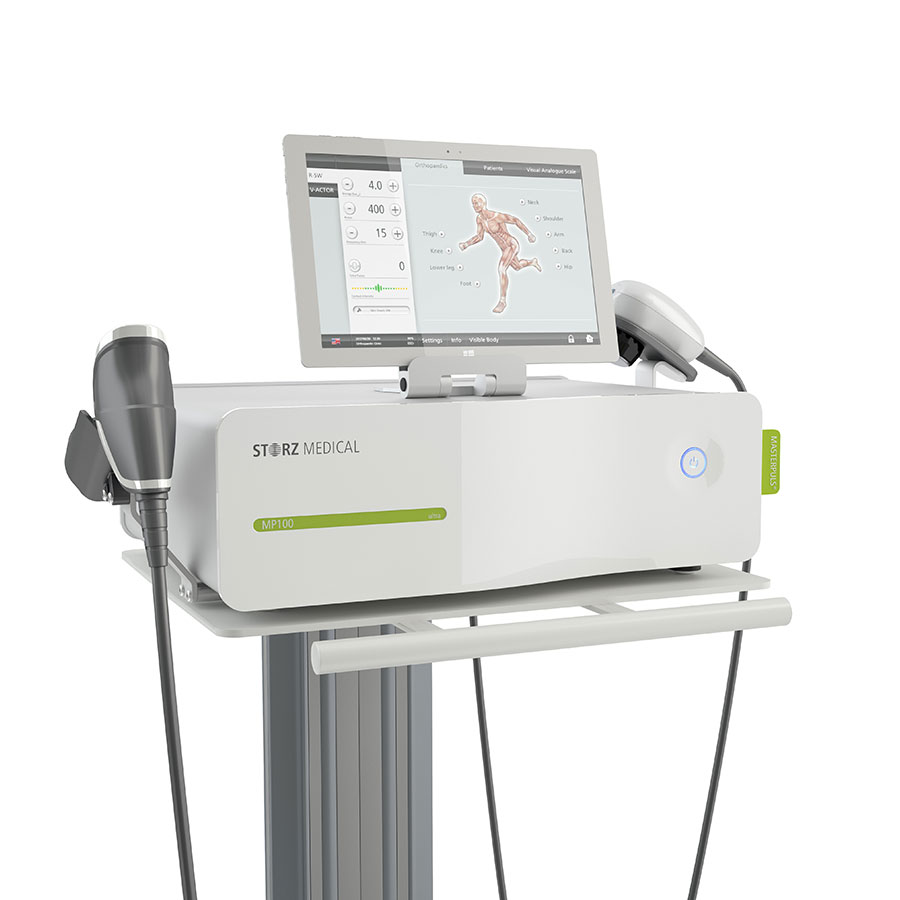 Since then, the technology has been proven successful in a number of scientific studies for the treatment of chronic conditions. Many people report that their pain is reduced and mobility improved after the first Shockwave therapy treatment.
Since then, the technology has been proven successful in a number of scientific studies for the treatment of chronic conditions. Many people report that their pain is reduced and mobility improved after the first Shockwave therapy treatment.
How does shockwave therapy work?
Shockwave therapy is a modality that is becoming more common in health clinics. Using a much lower energy than in medical applications, shockwave therapy, or extracorporeal shock wave therapy (ESWT), is used in the treatment of many musculoskeletal conditions, primarily those involving connective tissues such as ligaments and tendons.
Shockwave therapy offers practitioners at Optimum another option for stubborn, chronic injuries. Some tendon conditions are resistant to traditional forms of treatment, and having the ability to utilize shockwave therapy treatment allows practitioners another tool in their arsenal. Shockwave therapy is most suited for people who have longstanding (ie greater than six weeks) tendinopathies (commonly referred to as tendinitis) which haven’t responded to other treatments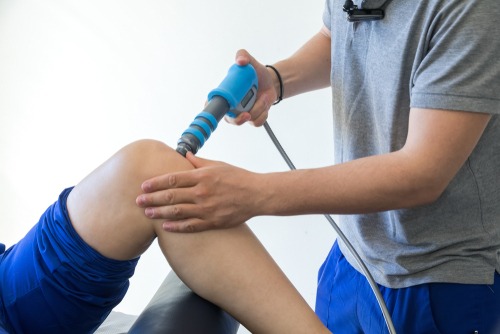 . Common conditions that show treatment effectiveness include: tennis elbow, achilles, rotator cuff, plantar fasciitis, jumpers knee, and calcific tendinitis of the shoulder.
. Common conditions that show treatment effectiveness include: tennis elbow, achilles, rotator cuff, plantar fasciitis, jumpers knee, and calcific tendinitis of the shoulder.
For access to available research on Shockwave therapy click here
Low Level Laser Therapy
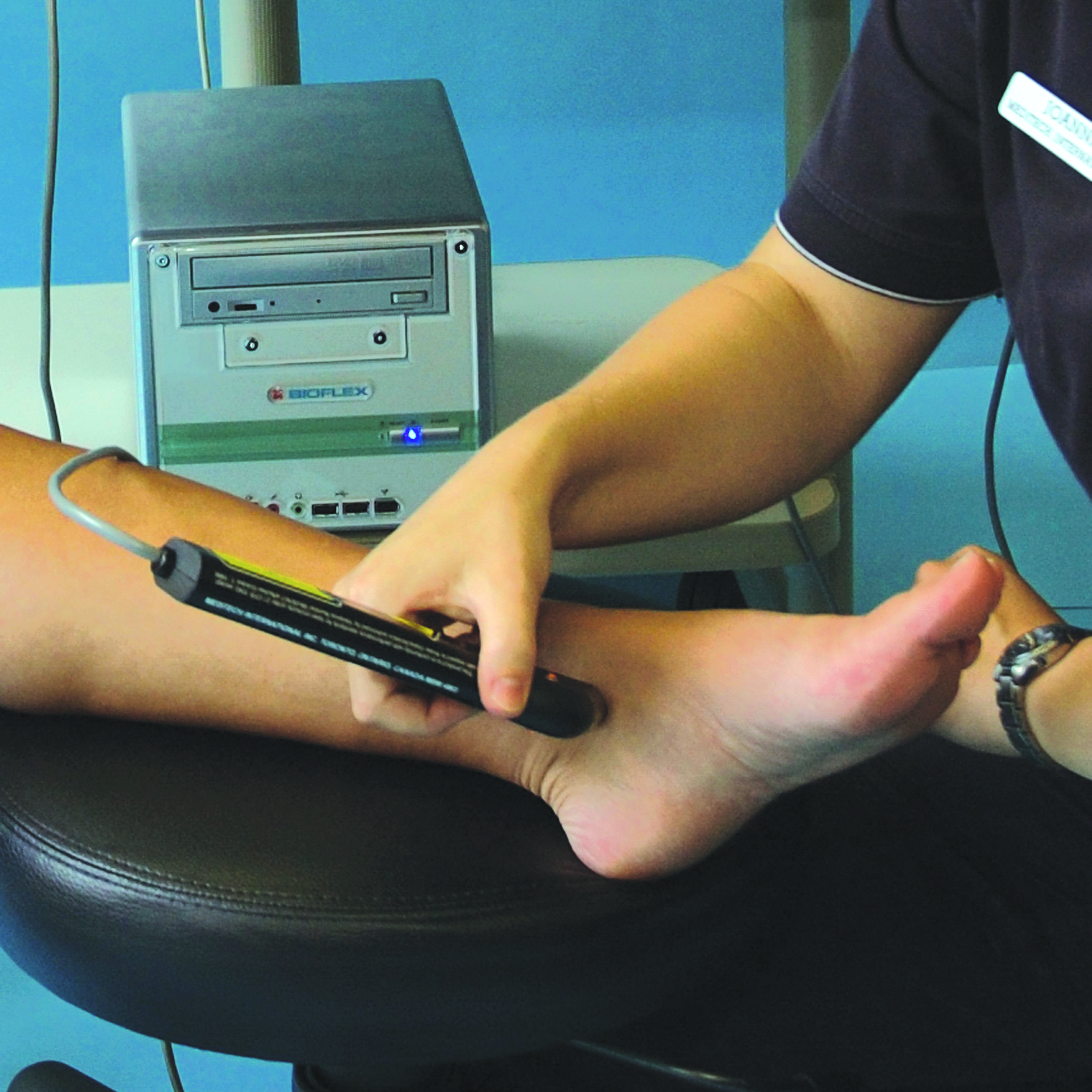
Low Level Laser Therapy (also known as Class 3B or “Cold” Laser Therapy) is a safe, non-invasive treatment that uses specific wavelengths of light to improve (speed up and increase efficiency) the natural healing process after an injury. Treatments are typically around 30 minutes in length, and have been shown to produce the following positive responses:
- Decreased pain and inflammation
- Improved blood flow / circulation
- Reduced recovery time
Common conditions treated using Laser Therapy include:
- Ligament sprains / muscular strains
- Tendonitis (rotator cuff, achilles, tennis elbow, jumper’s knee)
- Bursitis
- Knee Injuries
- Carpal Tunnel Syndrome
- TMJ (Jaw) pain
- Joint Inflammation
- Wounds
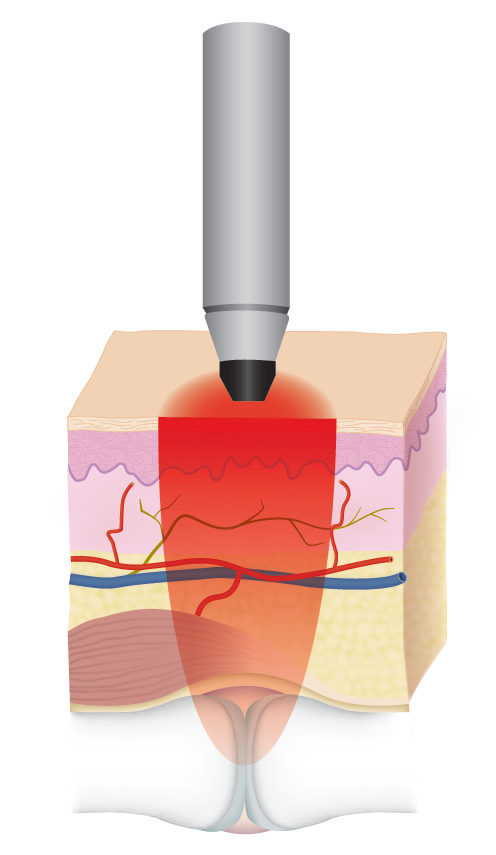
As with all forms of treatment, results can vary considerably. The number of treatments required are dependent on the nature of the injury and the overall health of the individual. Practitioners at Optimum will suggest an appropriate treatment plan after a thorough assessment of the injury or condition.
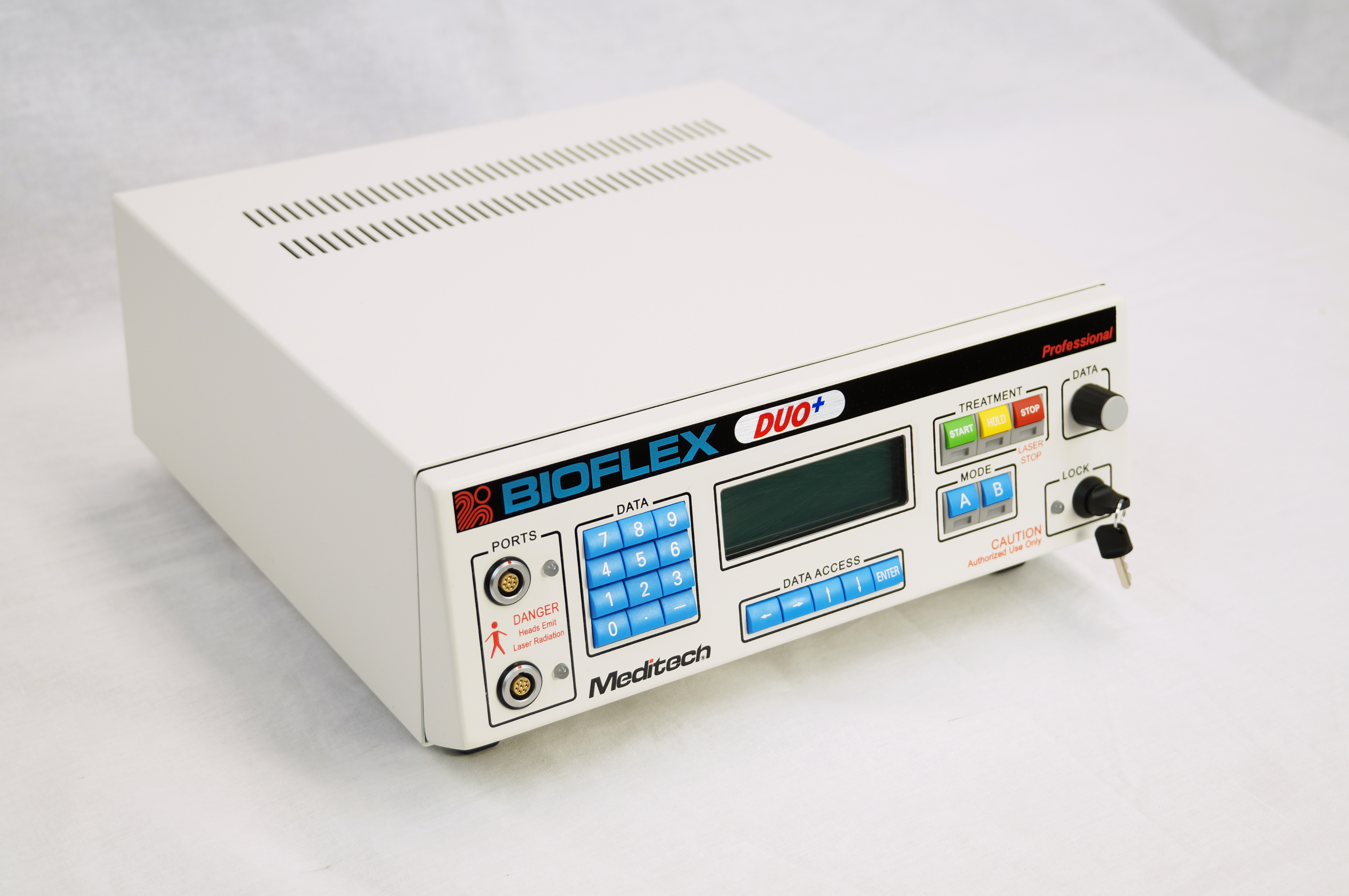
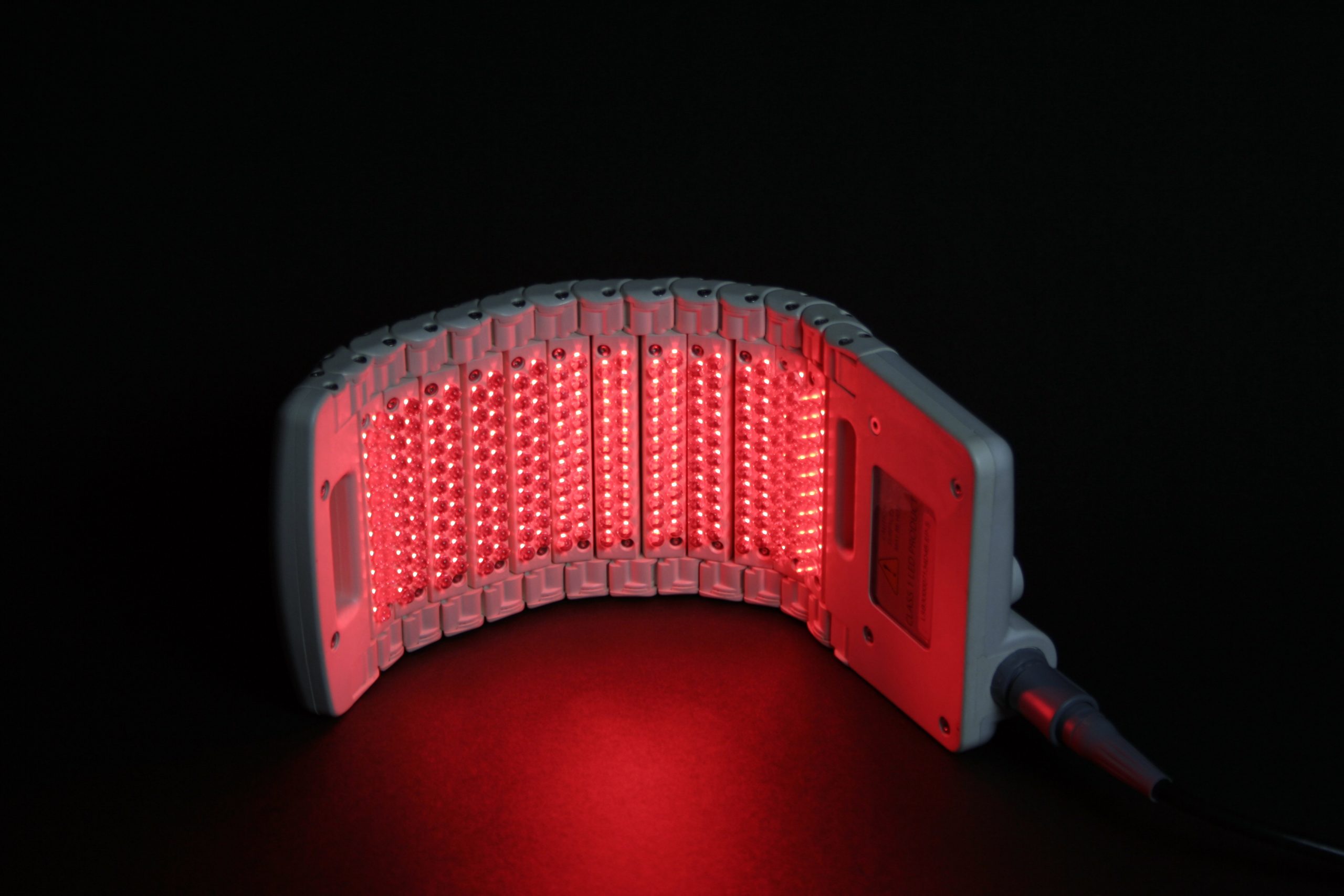
Pelvic Health Physiotherapy
Pelvic Health Physiotherapy is an evaluation and treatment of the pelvic floor for both men and women. The aim is to support and treat urinary incontinence/bowel and bladder concerns, pelvic pain, intercourse discomfort, and pre/postpartum needs. There can be many reasons for pelvic health complications including, but not limited to, surgery, pregnancy, childbirth, genetics, trauma and aging.
Who Offers These Services:
Contact Us
IMS/Dry Needling – Intramuscular Stimulation
Intrasmuscular Stimulation (IMS) is a method of diagnosis and treatment of myofascial pain syndromes and chronic pain conditions. IMS uses acupuncture needles to penetrate deep within muscle tissue to target injured, contracted and distressed muscles. IMS involves dry needling of affected areas of the body including epicenters of taut, tender muscle bands, and areas near the spine where the nerve root may have become irritated and hypersensitive. Our acupuncturist Kelsey Jackson will ensure that you are comfortable through the entire treatment and work within your tolerance of discomfort.
Pre and Post-Surgical Rehabilitation
Optimum plays a vital role when preparing for or recovering from surgery. Our team of experienced and highly qualified practitioners will ensure that you are in the best form possible to go into surgery and will carefully guide you through the post-operative period. We are committed to seeing you right through the process so that you can successfully return to all of your life and sport activities.
We are experienced at taking patients through various surgical procedures including:
- ACL reconstruction, total knee replacements, patella reconstruction
- Shoulder surgery
- Spinal surgery
- Hip replacement and hip arthroscopy
- Wrist fractures and carpal tunnel release
- Ankle fractures and reconstruction
We are equipped with a bright, spacious exercise gym where we will help you through the steps of the pre and post-surgical rehabilitation process. Our practitioners will provide you with appropriate range of motion, stabilization, and strength exercises which will help you gain back independence and function.
We will obtain reports from your orthopaedic surgeon after your surgery and provide them with progress reports throughout your recovery to ensure that your progress is on track and that you have a successful outcome.
Functional Rehabilitation
Functional rehabilitation is an extension of the traditional elements of physical therapy, the purpose of which is to return the patient to complex movement patterns. As well as the traditional elements of physical therapy such as strength and flexibility, the functional rehabilitation program incorporates agility and proprioceptive/kinesthetic training, which enable the patient to participate at pre-injury levels of activity while reducing the risk of recurrent injury. The functional rehabilitation program is designed to progress the patient from simple activities, such as walking or jogging, to highly complex sport-specific or work-specific activities that require refined levels of proprioceptive acuity. The final phase of the functional rehabilitation program is determining when the patient is ready to resume participation in their respective sport or job.
Sport Injury Management
Sport injuries, whether you are an elite or recreational athlete, require specialized care. The spectrum of sport injury management at Optimum ranges from injury risk screening and prevention programming to sport-specific movement training and performance enhancement. Our practitioners at use the most effective treatment methods and have a vast array of experience working with athletes of all ages and ability. Moreover, our practitioners are active themselves and personal experience with sport-related injuries provides them with a deep understanding of the experiences of injured athletes.
Manual Therapy
Manual Therapy is a clinical approach utilizing skilled, specific hands-on techniques to assess and treat injury and dysfunction in soft tissues and joints in the body. This can involve assisted stretches, deep tissue massage, myofascial release, mobilizations and manipulations. Mobilizations are gentle, rhythmic, passive movements and manipulations (also referred to as “adjustments”) are skilled, passive, quick movements. Manual therapy is effective in achieving numerous treatment goals including: modulating pain, increasing range of motion (ROM), reducing or eliminating soft tissue inflammation, inducing relaxation, improving contractile and non-contractile tissue repair, extensibility, and/or stability, facilitating movement and improving function.
Active Release Techniques® (ART®)
ART® is a state-of-the-art soft tissue system/movement-based massage technique that treats problems with muscles, tendons, ligaments, fascia and nerves. Headaches, back pain, carpal tunnel syndrome, shin splints, shoulder pain, sciatica, plantar fasciitis, knee problems, and tennis elbow are just a few of the many conditions that can be resolved quickly and permanently with ART®. These conditions all have two important things in common: they are often a result of overused muscles, and they often lead to the production of tough, dense scar tissue. Optimum’s ART® practitioners use their hands to evaluate the texture, tightness and movement of the affected tissues, and subsequently remove the scar tissue from these structures using a precisely directed tension with very specific patient movements.
Graston Technique®
Graston Technique® is an innovative form of instrument-assisted soft tissue mobilization that enables clinicians to effectively break down scar tissue and facial restrictions. The technique utilizes specially designed stainless steel instruments to detect and treat areas exhibiting soft tissue fibrosis or chronic inflammation.
The benefits to the patient include:
- Decreased overall time of treatment
- Faster rehabilitation/recovery
- Reduced need for anti-inflammatory medication
- Resolution of chronic conditions thought to be permanent
Kinesio Taping® and Athletic Taping
The Kinesio Taping® Method is a rehabilitative taping technique that is designed to facilitate the body’s natural healing process. It provides support and stability to muscles and joints without restricting the body’s range of motion, providing extended soft tissue manipulation to prolong the benefits of manual therapy administered within the clinical setting. Latex-free and wearable for days at a time, Kinesio® Tape is safe for populations ranging from pediatric to geriatric, and successfully treats a variety of orthopedic, neuromuscular, neurological and other medical conditions. Athletic taping is a traditional taping technique that effectively wraps a joint to provide stability and support in cases of ligament and joint capsule sprains.
Custom-Made Prescription Orthotics
Custom-made orthotics are prescribed by the practitioners at Optimum and manufactured at an affiliate laboratory. A foam impression of the patient’s foot, along with a biomechanical assessment, are sent to the laboratory where they custom fabricate an orthotic device designed to improve the patient’s static and dynamic structural alignment.



